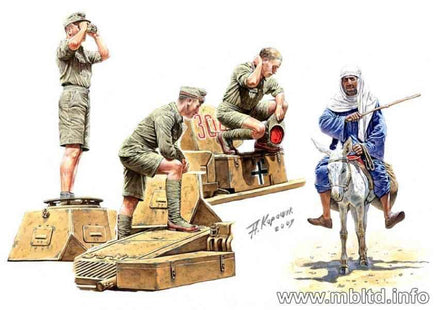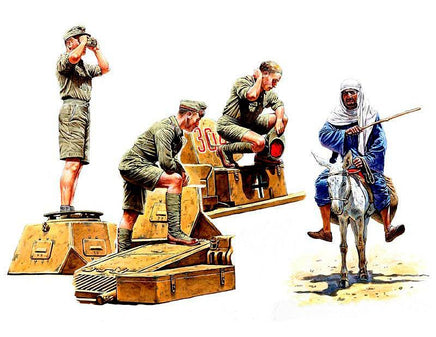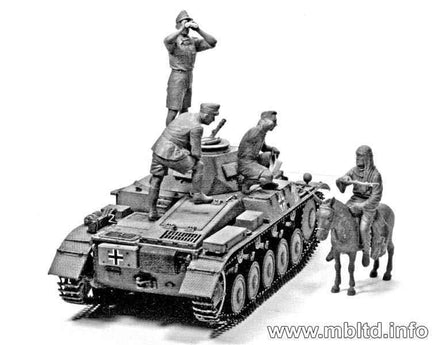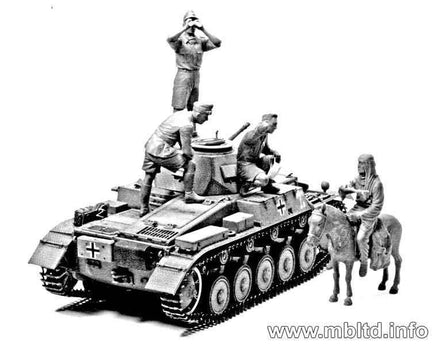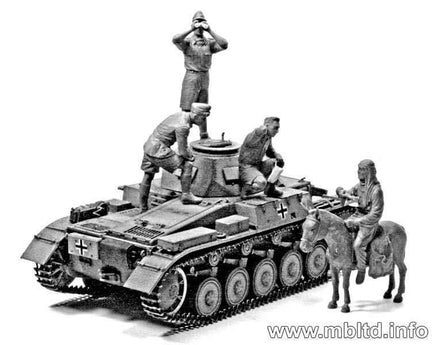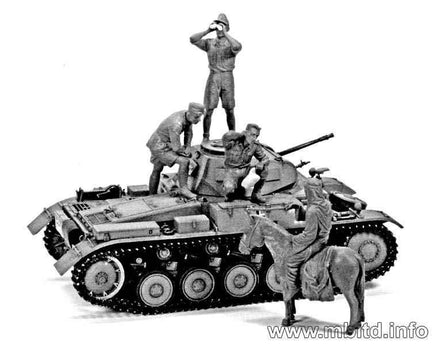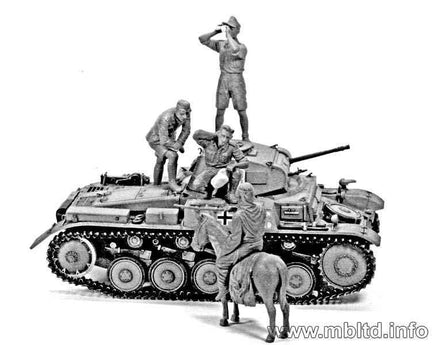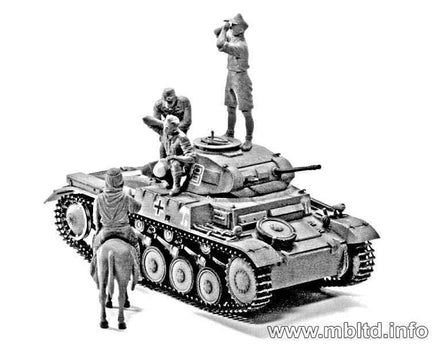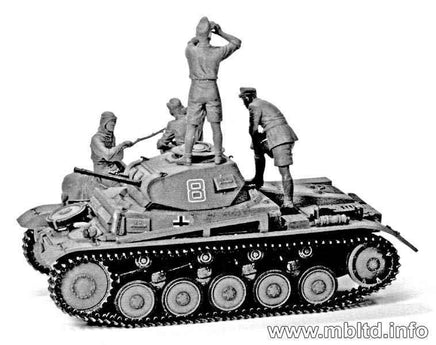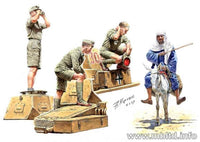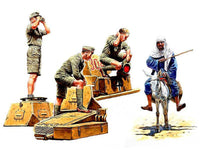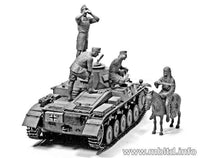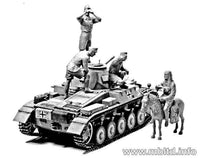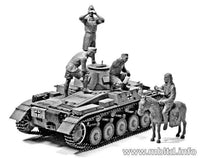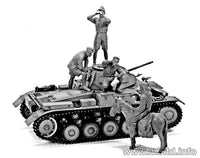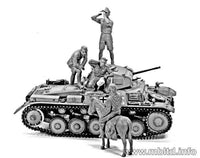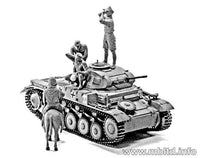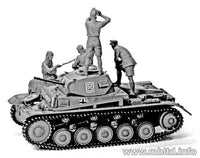The first tanks in the German army appeared at the end of World War I - these were the A7V machines. After the signing of the Treaty of Versailles, the German armed forces were forbidden to develop armored weapons, but the German side did not honor these restrictions and secretly developed armored weapons. However, after Adolf Hitler came to power in 1933, this development became fully official, and in 1935, the 1st Armored Division was formed. In the period 1935–1939, further divisions were formed, and their main equipment was the Pz.Kpfw cars: I, II, III, and IV. A single armored division at that time was composed of a tank brigade divided into two armored regiments, a motorized infantry brigade, and support units, among others: reconnaissance, artillery, anti-aircraft, and sappers. It consisted of about 300 tanks in full. It is also worth adding that the German armored forces (German: Panzerwaffe) were trained and prepared to implement the doctrine of lightning war and not, as in many armies of the time, to support infantry activities. Therefore, emphasis was put on training "pancerniaków" on the interchangeability of functions, independence in decision-making by officers and non-commissioned officers, and the best technical mastery of the tanks owned. All this resulted in the great successes of German armored weapons in Poland in 1939, but especially in Western Europe in 1940. Also in the course of the fighting in North Africa, especially in the period 1941–1942, the German armored forces turned out to be a very difficult opponent. Before the invasion of the USSR, the number of German armored divisions almost doubled, but the number of tanks in these units decreased to about 150–200 vehicles. Also, in the course of the fighting on the Eastern Front, especially in 1941–1942, the German armored forces were superior in training and organization to their Soviet opponent. However, contact with such vehicles as the T-34 or KW-1 forced the introduction of the Pz.Kpfw V and VI tanks to the line in 1942 and 1943. Growing losses on the Eastern Front, as well as lost battles at Stalingrad or Kursk, made the German Panzerwaffe weaken. Its structure included heavy tank battalions (with 3 tank companies), and in 1943, armored grenadier divisions were established. There was also an increasingly clear advantage for the Soviet side, and from 1944 on, there was a need to simultaneously fight the Soviet troops in the east and the Allies in the west. It is also assumed that it was then (in the years 1944–1945) that the training of the German armored forces was weaker than in the previous period and did not constitute such a significant advantage on the German side as before. The last large-scale operations of the German Panzerwaffe were the offensives in the Ardennes (1944–1945) and in Hungary (1945).
Afrika Korps (full German name: Deutsches Afrikakorps, abbreviated as DAK) is colloquially understood as the collective name of German land units fighting in North Africa in 1941–1943. The Afrika Korps was formed in February 1941 as a result of the painful defeats suffered by the Italian army during the battles with the British in Africa at the turn of 1940–1941. His main task was to come to the aid of the Italian ally and stop the advance of British troops in Libya. The commander of the unit was a general and later a field marshal, Erwin Rommel. Initially, the DAK consisted of only the 5th Light Division (later transformed into the 21st Armored Division); in May 1941, it was joined by the 15th Armored Division, and at the end of 1941, the 90th Light Division. It is worth adding that already in the middle of 1941, the Panzergruppe Afrika was founded, headed by Erwin Rommel, and it was joined by the Afrika Korps. Despite the defensive tasks, the DAK (or more broadly, the Panzergruppe Afrika) very quickly after landing—on the initiative of its commander—went into strictly offensive operations, inflicting a series of defeats in the desert on the British in 1941–1942. However, it was then that its commander was nicknamed the Desert Fox. At the same time, however, from the very beginning, DAK was troubled by supply problems, which had a negative impact on its ability to conduct offensive actions. He suffered a significant defeat during the Second Battle of El Alamein (October–November 1942), which forced the DAK to retreat as far as Tunisia, where he fought until May 1943.

